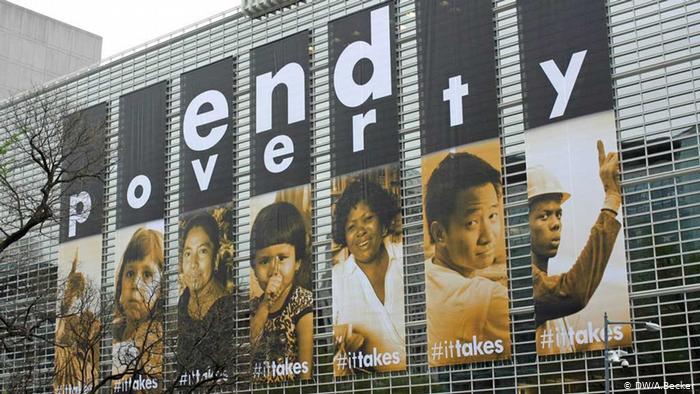
The Covid-19 pandemic has forced everyone to rethink our priorities and revise our approach to problem solving. It has also pushed millions of people across the world into poverty. But in order to help these people regain their financial health, perhaps it is time we revisited the traditional idea of the poverty line.
A new report titled ‘The parlous state of poverty eradication’ by the United Nations Special Rapporteur on extreme poverty and human rights makes a case for a revision of the World Bank’s International Poverty Line (IPL). In the report, author and Australian scholar Philip Alston says, “The world is at an existential crossroads involving a pandemic, a deep economic recession, devastating climate change, extreme inequality, and an uprising against racist policies. Running through all of these challenges is the longstanding neglect of extreme poverty by many governments, economists, and human rights advocates.”
Alston further says, “By single-mindedly focusing on the World Bank’s flawed international poverty line, the international community mistakenly gauges progress in eliminating poverty by reference to a standard of miserable subsistence rather than an even minimally adequate standard of living. This in turn facilitates greatly exaggerated claims about the impending eradication of extreme poverty and downplays the parlous state of impoverishment in which billions of people still subsist.”
Alston gives an example of the flawed method of calculation stating, “The current line is derived from an average of national poverty lines adopted by some of the world’s poorest countries, mostly in Sub-Saharan Africa. Unlike many national lines, it is not based on any direct assessment of the cost of essential needs. It is an absolute line, constant in value, calculated and expressed using purchasing power parity (PPP) dollars, which are designed to adjust for the costs of goods in different countries in a way that market exchange rates do not (notwithstanding the many challenges to the validity of the PPPs). According to the Bank, the line is a globally relevant yardstick that allows for the achievement of the same meager needs in every country.”
The report then showcases how this flawed calculation actually translates in the real world. It says, “The current line of US$1.90 2011 PPP per day11 represents what that amount could buy in the United States in 2011. Expressed in local currencies for the most recent years available, the line translates to living on 7.49 yuan per day in China, 1.41 euros in Portugal, 22.49 pesos in Mexico, 50.83 rubles in Russia, 355.18 naira in Nigeria, 910.15 pesos in Chile, or 36.27 rupees in India. The IPL is of course well below the national poverty lines of most countries, and accordingly generates dramatically lower numbers in poverty. For example, using the most recent comparisons available, Thailand has a poverty rate of 0.0 percent under the IPL but 9.9 percent under the national line,13 the United States, 1.2 percent versus 12.7 percent,14 South Africa, 18.9 percent versus 55 percent,15 and Mexico, 1.7 percent versus 41.9 percent.”
Alston’s report lays down many short-comings of the WB’s IPL, most significantly the failure to account for social differences, gender inequality and overlooked groups homeless people, migrant workers, refugees, etc. The report also criticizes how most governments have failed to take into account the poor in their approach to tiding over the Covid-19 pandemic. It says, “The pithy advice to ‘stay home, socially distance, wash hands, and see a doctor in case of fever’ highlights the plight of the vast numbers who can do none of these things. They have no home in which to shelter, no food stockpiles, live in crowded and unsanitary conditions, and have no access to clean water or affordable medical care.” It adds, “Poor people are more likely to be exposed to, and least likely to be protected from, the virus. They experience the impact of lockdowns, layoffs, and closures far more dramatically. The majority of ‘essential workers’ are poorly paid, badly protected, and unsupported by emergency assistance. In the understandable rush to re-open economies, they risk becoming sacrificial lambs.”
Given how the IPL has helped us come up with the Millennium Development Goals (MDG) and Sustainable Development Goals (SDG), perhaps we need to recalibrate these as well. In conclusion the report says that the approach to poverty alleviation must be reviewed and revised. Alston says, “Poverty is a political choice and its elimination requires: (i) reconceiving the relationship between growth and poverty elimination; (ii) tackling inequality and embracing redistribution; (iii) promoting tax justice; (iv) implementing universal social protection; (v) centering the role of government; (vi) embracing participatory governance; and (vii) adapting international poverty measurement.”
The entire report may be viewed here:
Related:
55 million domestic workers could lose jobs due to Covid-19: ILO
Covid-19 impact: Child Labour likely to increase
Covid-19 pandemic has cost one in six young people their jobs: ILO
Lockdown through the gender lens
India may beat Covid-19, but will it recover from the unemployment spiral?
